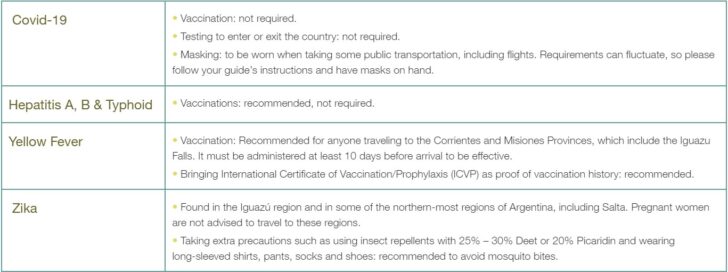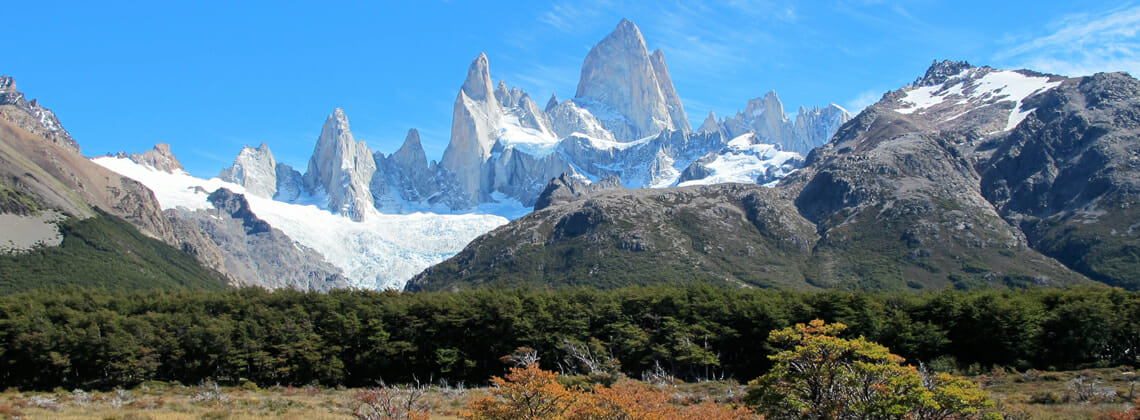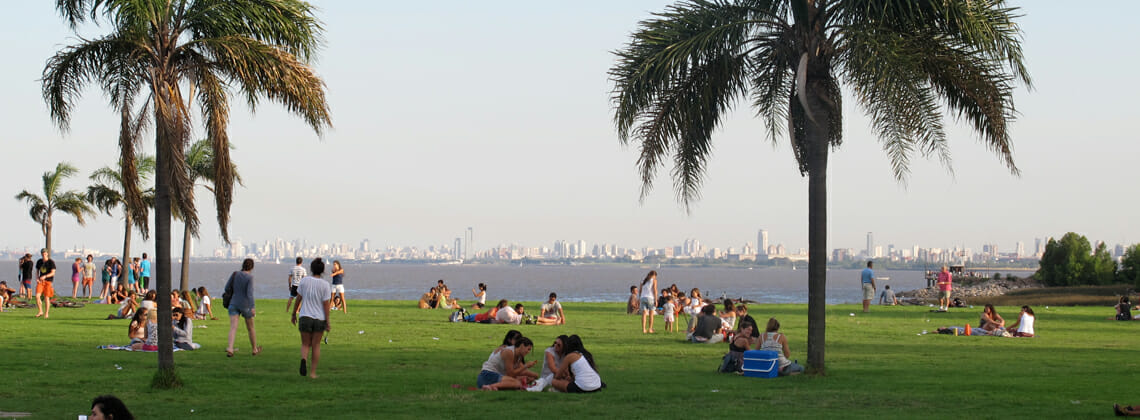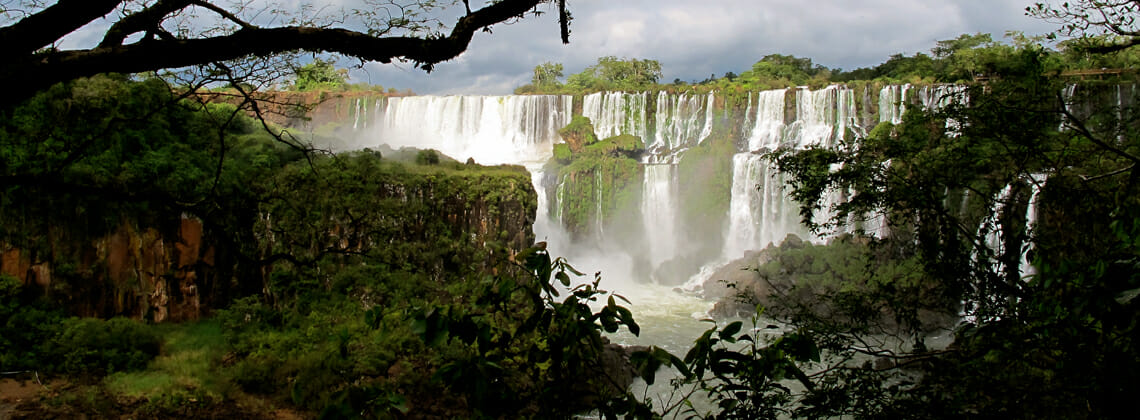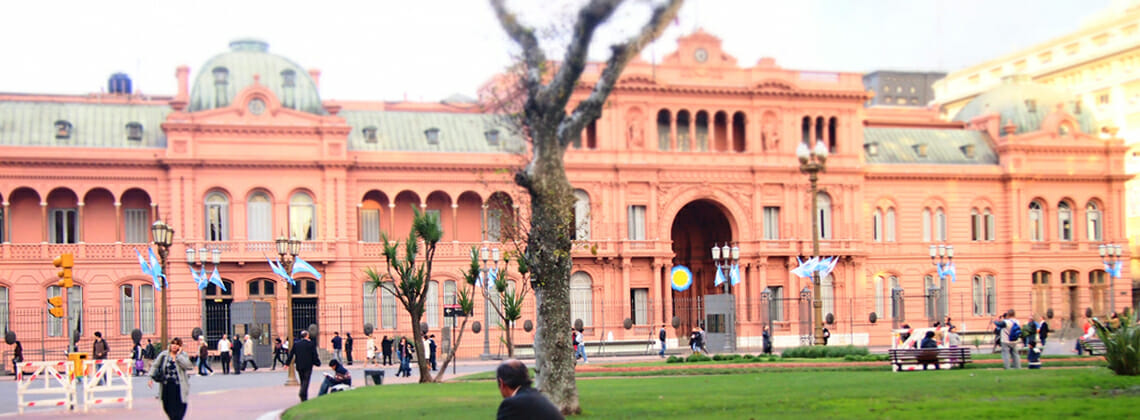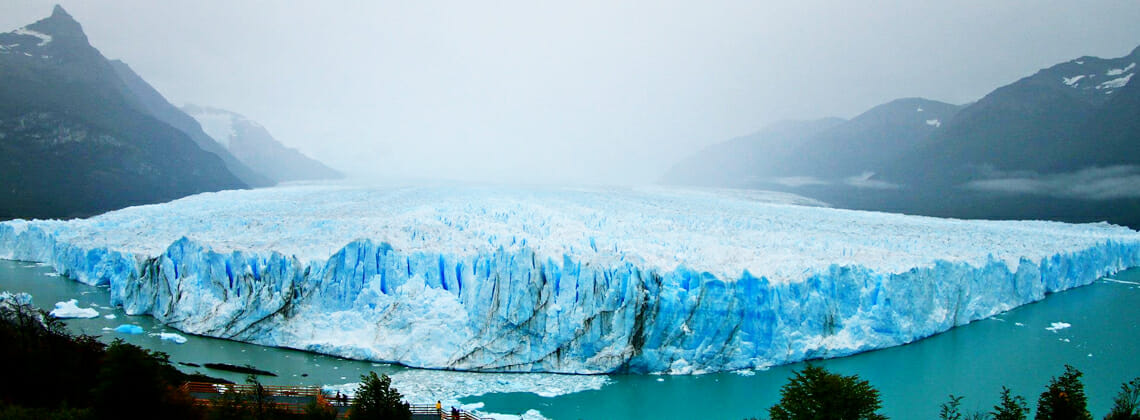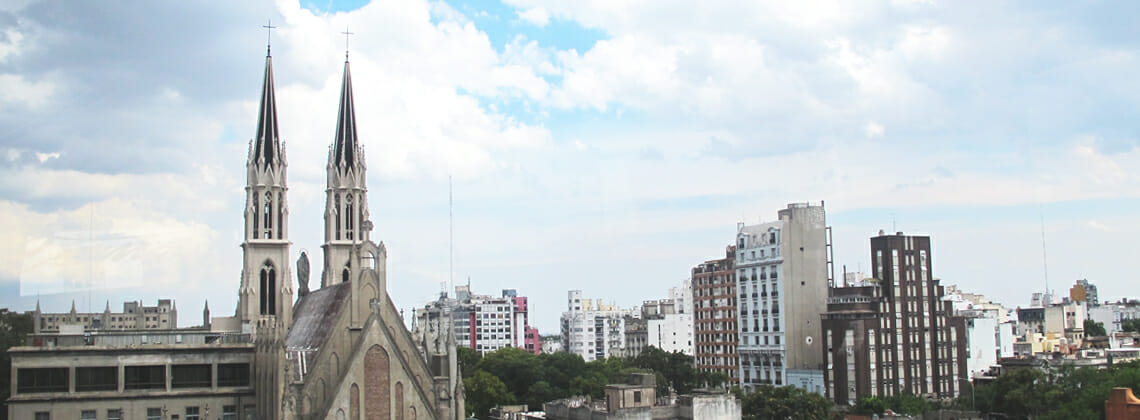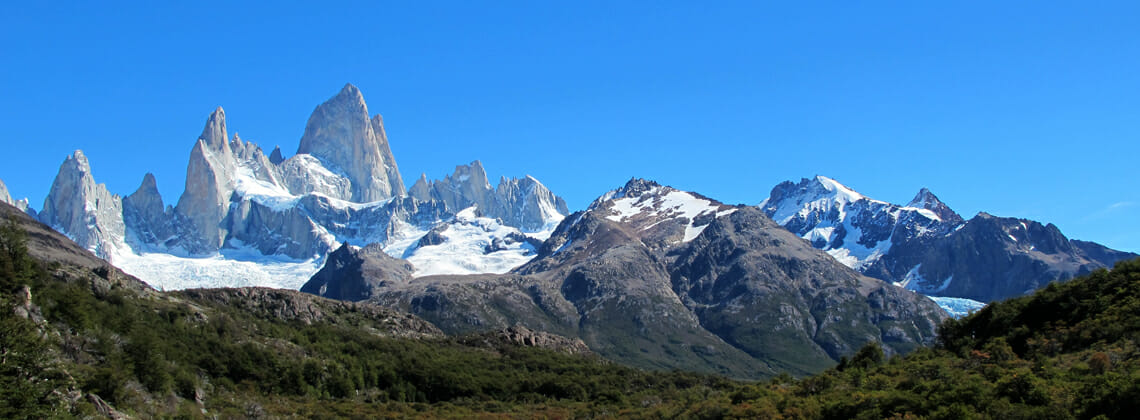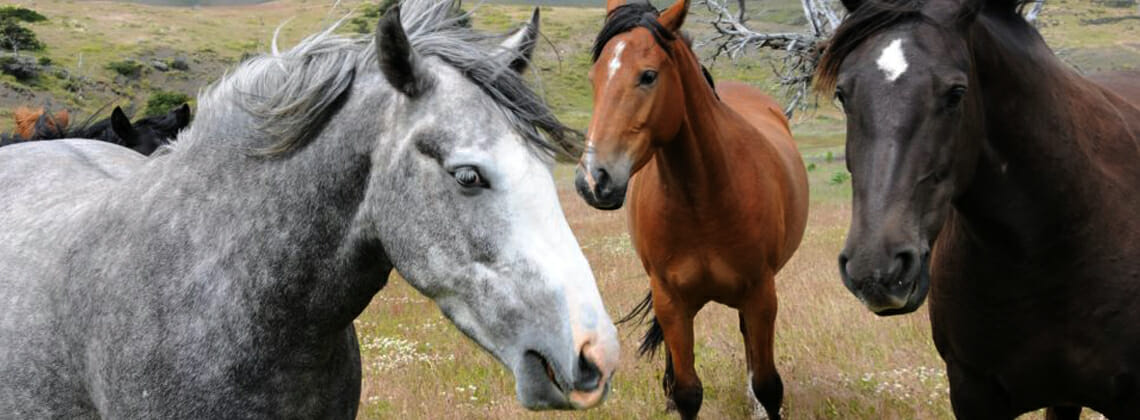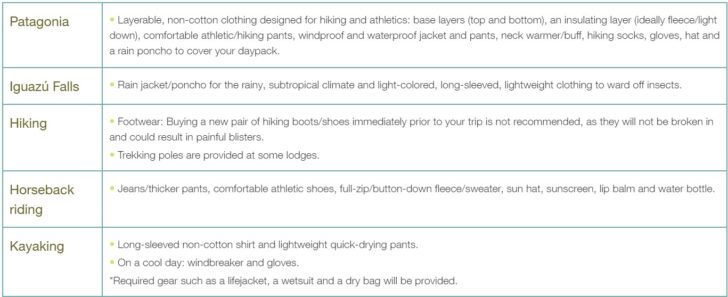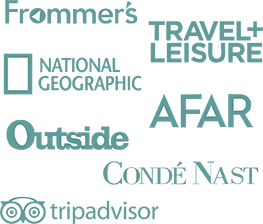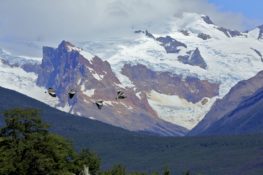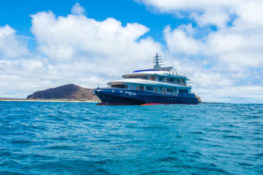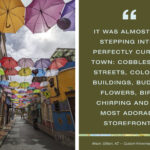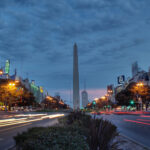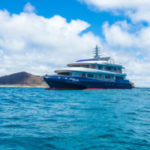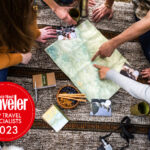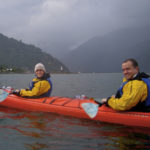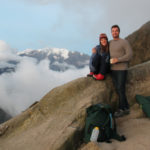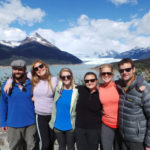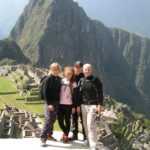- No visas/reciprocity fees needed for U.S. and Canadian citizens to enter Argentina.
- Proof of onward travel (i.e. return flight tickets) may be required.
There are two main exchange rates in Argentina; the official and the nonofficial Blue Dollar. To make the best of your USD:
- Bring more USD in cash than you would typically, to use for tips and purchases. Many shops and restaurants will accept them and give you an exchange rate similar to the Blue Dollar, which is better than what the bank would give you (official rate). Please note that a maximum amount of $10,000 per family can be carried on the plane.
- In Northwest Argentina it is better to use pesos, since there are not many ATMs and many stores don’t accept credit cards.
Then, in combination with cash:
- Pay by debit/credit card if it’s a Visa or Mastercard, as both now use an exchange rate close to the Blue Dollar. However, please note that your bank may charge extra international transaction fees.
- Take Argentine pesos from local ATMs/Banks if needed. In these cases, your bank will use the official exchange rate and again, may charge extra international transactions fees.
- Tips in USD are often preferred, but the local currency (Argentine pesos) is also fine. Large bills can be difficult to break, so hang onto small bills and change for tips.
- Use the following only as a framework and tip based on the level of service you receive.
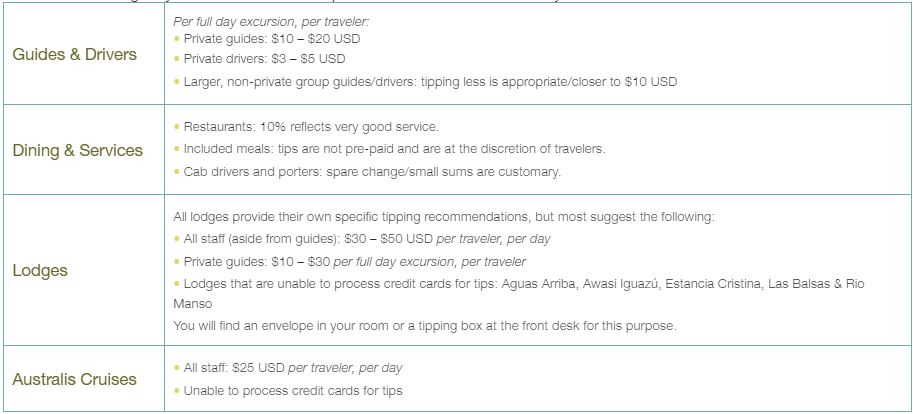
- Trip insurance is not included in your trip cost. Knowmad highly recommends insuring your trip, as the unforeseeable is just that, unforeseeable. A few days after confirming your trip, you will receive an email from our recommended travel insurance provider with a pre-built quote that you’ll be able to purchase.
- A plug adapter is needed to make any device fit both a “C” style socket (two, wider-set, round prongs) and an “I” style socket (three flat prongs: top two slanting inward and the bottom, vertical). Each individual building will only use one or the other.
- Accepted voltage: 220 – 240. Devices like cameras and phone chargers should accept this voltage, but hair dryers and curlers of 110 volts will likely fry.
- A converter is needed if devices do not accept 220 – 240 volts. Check labels for compatibility.
- Drinking bottled water is recommended.
- In Buenos Aires and most of the country water is good, and although most locals drink from the tap, it can be highly chlorinated and unappealing to those not accustomed to it.
- In rural areas in the north of the country, tap water is not potable, so sticking to bottled water at all times is recommended.
Argentina is considered a safe country, but petty crime does occur. Take the following precautions:
- Be aware of your surroundings, always keeping a close eye on your belongings, especially in crowded places.
- Use a bag that zips, doesn’t hang loosely and when in crowds, move it to the front of your body.
- Avoid wearing flashy/expensive jewelry/watches.
- Carry only the money you need each day. Keep the rest with your valuables in your hotel room’s safety deposit box.
- When paying a taxi fare, or for in-store purchases, make sure you are receiving the correct change.
- A popular pickpocketing scam is to distract the traveler by spilling something on them (like coffee or water) and while that person helps clean it up, a partner steals the traveler’s bag or wallet.
Beyond open eyes, an open mind, and your sense of adventure, here are some guidelines for packing for your trip. Argentina is generally a casual country, however in Buenos Aires you’ll see an eclectic and chic cosmopolitan style. Weather varies dramatically between regions and elevations and can change quickly, so layerable clothing is recommended. Shorts are not as common in Argentina; however, they are acceptable in most settings.
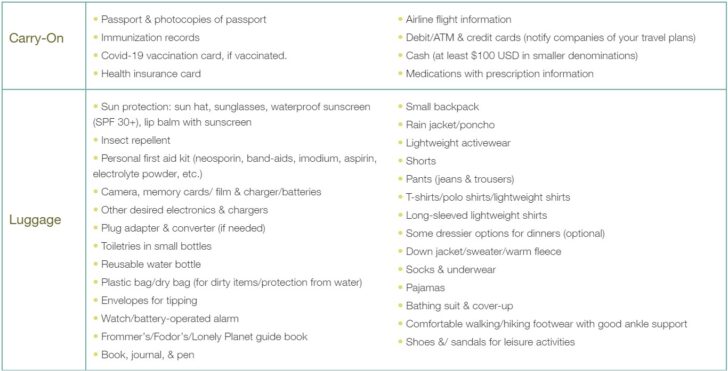
Check with your carrier and refer to your ticket booking details for information on baggage restrictions and fees.
Knowing a lot about a country before you visit can enrich your travels, help you meet and relate more to local people, and have deeper appreciation for historical and cultural sites. To learn more about Argentina’s history, culture, and people, we recommend consulting travel guide books, online websites, and travel blogs.
Meals in Argentina are more leisurely and on a later schedule than in the United States. Argentinians eat 4-5 meals per day.
Breakfast is simple, and lunch doesn’t begin until 1-2:00 p.m., and can last a few hours. During this time, many businesses will be closed. Dinner times in Argentina are much later than in most of the United States, and many restaurants will not open until after 7:00 p.m. On weeknights, dinner for most Argentinians begins after 9:00 p.m., and on weekends even later. Meals are meant to be enjoyed and expected to be unrushed. You will have to ask for the check, as it is considered rude to provide a check without the patron having requested it. If you would like Knowmad to assist you with making restaurant reservations, please note that we must be notified at least 2 weeks prior to your dates of travel, especially if traveling during December or early January.
Price guide for the approximate cost of a main dish at each restaurant (please note that prices and restaurant hours are subject to change without notice): $ = Under 10 $$ = 10-20 $$$ = 20-40 $$$$ = Over 40
Covid-19 has affected restaurants’ hours of operation in South America as in the United States. Please refer to their websites For additional information and to make a reservation, as doing so may require you to enter payment information to confirm the reservation. We recommend making reservations at least 2 months in advance for the Christmas, New Year’s, and Easter holiday dates; and further in advance if looking to dine at a particular restaurant. If calling or making reservations from outside of Argentina dial +54 before the complete phone number.
BUENOS AIRES – RECOLETA
- ROUX – Price: $$$$ Roux has a sophisticated menu and beautifully presented plates. This French-Argentinian restaurant is small, so it’s best to make reservations.
- SOTTOVOCE – Price: $$$ Classic Italian restaurant deemed one of the best by locals.
- PIZZERíA GüERRíN – Price: $$ Founded in 1932 by Genoveses immigrants, it has become very popular around the city due to its history. Try the specialty pizza “de mozzarella with faina” or “the fugazzeta rellena.”
- EL SANJUANINO – Price: $ Known for having some of the best empanadas in town, San Juanino is a relaxed, casual establishment with a local feel. Quaint and close to Casa Sur Recoleta.
BUENOS AIRES – PALERMO
- DON JULIO – Price: $$$ A rustic but charming steakhouse, Don Julio is the place to go if you’re looking to pair Argentinian beef and wine.
- LA CABRERA SUR – Price: $$$ The perfect place to enjoy some of Argentina’s best steak and parilla. Be sure to stop by or call to make reservations because it’s a porteño favorite!
- MISHIGUENE – Price: $$ Serving classic recipes from Israeli, Middle Eastern, and Mediterranean cuisine with a modern Argentine twist.
- SACRO – Price: $$$$ A high-end vegan restaurant and bar with unique dishes like activated charcoal empanadas, dosa, carrot baos, sweet potato ravioli, and palta lime pie. They also serve a variety of superfood cocktails and cold-pressed juices.
- NIÑO GORDO – Price: $$$$ Restaurant and bar that brings Asian – porteño innovative flavours. Lovely décor, red lighting, Manga and figurines all around.
- LA CARNICERIA – Price: $$$ Modern parrilla sources grass-fed meat from a family farm in the Pampas. It’s small and smoky ambience. Be sure to start with their provelta!
- CHORI – Price: $$ Argentina’s most iconic street food, where the homemade chorizo, fresh-baked bread, and creative toppings all join forces in sandwich harmony.
- LAS FLORES – Price: $$-$$$ This new space fuses creative gastronomy and gluten free in an environment full of native flora.
- CASA COUPAGE – Price: $$$$ A delicious dinner inside the dining room of an Argentine house that dates back to 1890, and home of the host. This closed door dinner will come with amazing wines and a blind tasting alongside a multi-course meal in a wonderfully unique experience.
BUENOS AIRES – SAN TELMO
- PULPERIA QUILAPAN – Price: $$ Travel back through time to the colonial Buenos Aires with this restaurant’s amazing historical atmosphere. Enjoy some traditional Argentinian dishes and wine from penguin-shaped pitchers, unique to Argentina.
BUENOS AIRES – PUERTO MADERO
- CABAÑA LAS LILAS – Price: $$$$ Known for its traditional Argentine meat from the family-owned business, this restaurant has a warm atmosphere with a focus on the quality of its dishes.
- PAROLACCIA DEL MARE – Price: $$$ Select from a variety plates of pastas and seafood as you enjoy this restaurant’s pleasant setting with beautiful views of the Puerto Madero waterfront. Reservations strongly recommended.
- AMARRA – Price: $$$$ This Modern, but sophisticated décor, offers eclectic Gourmet food putting a modern twist on traditional Argentine dishes. Good option for vegetarians and vegans.
- LA CABAÑA – Price: $$$$ This traditional Argentine grill has 80 years worth of “parrilla” history, including presidents and international artists as previous patrons
BUENOS AIRES – BARS AND NIGHTLIFE
- GRAN BAR DANZÓN – Price: $$$ Sushi and wine bar located in Recoleta. This place fills up, so arrive by 9 p.m!
- 878 – Price: $$$ Located in Palermo, there is no sign on this hidden bar – it simply looks like a house from the outside!
- PRESIDENTE BAR – Price: $$ A stylish period building is the home of this bar, characterized by an old-school glamor and cosmopolitan energy.
- EL BOTICARIO – Price: $$ Filled with apothecary jars, Boticario honors the pharmacists who dispensed alcoholic elixirs to treat all sorts of ailments
MENDOZA
- AZAFRÁN – Price: $$-$$$ A rustic chic setting with open air seating, an extensive wine list, and innovative and delicious dishes make Azafrán a great choice for a casual meal. Reservations can be made at http://azafranresto.com/en
- ANNA BISTRO – Price: $$$ One of Mendoza’s most beautiful restaurants with a wonderful garden area, cool music and carefully prepared, creative international dishes.
- EL MERCADITO – Price: $-$$ El Mercadito serves a variety of healthy meat and vegetarian options in a charming area with many restaurants and bars nearby. Perhaps take a stroll after dinner to see the bustling nightlife in Mendoza.
CALAFATE
- LA TABLITA – Price: $$-$$$ Argentinian through and through, La Tablita is known for its delicious Patagonian lamb.
- ISABEL COCINA AL DISCO – Price: $$-$$$ Experience a traditional Patagonian ranch meal cooked in plow discs. Reservations are recommended. To make a reservation contact your Operations Specialist.
- PURA VIDA – Price: $$ This café’s friendly atmosphere and their healthy vegetarian and gluten-free options make for a great experience. Keep in mind that they do not make reservations by phone, and it’s best to just stop by around 7:30 to get a table for dinner.
- BORGES Y ALVAREZ – Price: $$ With a nice atmosphere and music, this restaurant offers a very wide range of drinks and a library for those who enjoy reading.
CHALTÉN
- LA CERVECERÍA – Price: $$ The town’s only microbrewery, this popular pub also serves hearty locro (stew), empanadas, ceviche, and more.
- LA TAPERA – Price: $$ Great quality food and generous portions. With excellent service and a warm atmosphere, you feel like you are right at home. Reservations are recommended.
- AHONIKENK – Price: $$ After a long hike, this restaurant is the best spot to try Patagonian Lamb.
BARILOCHE
- EL BOLICHE DE ALBERTO – Price: $$ This no-frills grill serves up mouth-watering beef and wonderful tomato and basil empanadas and fries. Boliche is such an institution it has gained a reputation and now has a few locations.
- IL GABBIANO – Price: $$$ Located near the Llao Llao Hotel, this family-owned gem is a sure bet for excellent Italian.
- CERVECERIA MANUSH – Price: $$-$$$ The combination of quality beer, burgers, meats, and local fresh fish makes the Manush experience.
- LA CASITA – Price: $$ Regional food. Offers you the best of its home-made cooking, the attention of its owners and a cozy, atmosphere
- EL PATACON – Price: $$$ the best cuts of Argentine meat, gourmet dishes, regional food, vegetarian and celiac options.
- LA SALAMANDRA PULPERÍA – Price: $$$ A rustic local favorite known for its beef.
USHUAIA
- CHEZ MANU – Price: $$$ A bakery, café, and bar, Ramos Generales also functions as an informal historical museum of the city.
- REINAMORA – Price: $$$$ Located at Los Cauquenes Resort & Spa, they offer European gourmet cuisine and traditional Patagonian dishes, such as crab or lamb, and are great for a warm experience overlooking the Beagle Channel.
- KUAR – Price: $$ Enjoy a range of excellent dishes from more refined meals to unique appetizers and tapas. Pair your meal with a local craft beer.
- ALMACEN DE RAMOS GENERALES – Price: $$-$$$ A very local, charming and historic place, open all day long, you can have lunch and dinner. To start with, we suggest trying the best soups in town, the Patagonia lamb or pastas and their Patagonic fruits pie.
- KAUPE – Price: $$$ This word means “to be at home” in the selk-nam language. This local home turned into a restaurant, offers a wonderful fish & seafood menu and a great view.
SALTA
- EL BAQUENO COCINA – Price: $$$$ Above Salta city on Cerro San Bernardo, enjoy the expansive views and modern cuisine.
- MA CUISINE – Price: $$-$$$ International cuisine with a French flair is served in this small, friendly restaurant. Don’t be surprised if the chef comes to join you while you dine!
- DONA SALTA – Price: $$-$$$ A warm restaurant with a family-like atmosphere, it serves typical dishes of Salta and of the Argentine Northwest. Its specialities are the empanadas salteñas (baked or fried pastry stuffed with different kinds of meat, cheese or vegetables), grilled meats, tamales, baby goat casserole, humitas (prepared with fresh corn, sautéed onions and spices) and pastas.
- CAFE DEL TIEMPO – Price: $$-$$$ At Balcarce 901, this café offers international cuisine and drinks at all hours. It has a terrace, which is ideal to enjoy snacks and drinks listening to live music. The menu includes dishes with llama meat, snacks and international dishes such as chop suey.
- CASA ADOBE – Price: $$ Traditional Argentine food with a casual atmosphere, located in the city center.
CACHI
- LA MERCED DEL ALTO – Price: $$$ High class restaurant in a rustic setting, serving regional food and local wines.
- EL CORTIJO – Price: $$$ Specializing in local, Andean cuisine and with an extensive wine list.
CAFAYATE
- BAD BROTHERS – Price: $$-$$$ Wine bar and restaurant known for its wine selection. A reservation is recommended.
- PACHA COCINA DE AUTOR – Price: $$ A modern take on traditional Argentine foods and wines from the Calchaquí Valley.
PURMAMARCA
- EL MESÓN – Price: $$-$$$ Regional Jujeña food, made with local products and often ancestral techniques.
- LA COMARCA – Price: $$$ Fusion of regional, international and modern foods with relaxing views of the Quebrada.
- EL MANANTIAL DEL SILENCIO – Price: $$$ High quality Argentine food made from local ingredients and with vegetarian options available.
TILCARA
- EL NUEVO PROGRESO 1917 – Price: $$-$$$ A centric restaurant with regional foods with a gourmet touch. A reservation is recommended.
- LA PICADITA – Price: $$ Savor Argentine cuisine and Malbec wines while enjoying live music in the evenings.
- EL PATIO – Price: $$ Excellent regional food such as empanadas and milanesas, in a cozy restaurant with a patio.
- BIEN ME SABE – Price: $$ Restaurant with a mix of Argentine and Italian cuisines and with a relaxed atmosphere.
PUERTO IGUAZÚ
- AQVA – Price: $$$ A standout in Iguazú, Aqva’s specialties are local fish, meat, and home-made pastas.
- EL QUINCHO DEL TÍO QUERIDO – Price: $$$ Primarily known for its parrilla, occasional live music complements a lively atmosphere.
- IN PATAGONIA by Bruce Chatwin is a classic non-fiction recounting of an English writer’s entertaining and thrilling six-month exploration of Argentinian Patagonia.
- UTTERMOST PART OF THE EARTH by E. Lucas Bridges was first published in 1948, and tells of the true adventure of the first European settlers in Tierra del Fuego.
- AN EPISODE IN THE LIFE OF A LANDSCAPE PAINTER by César Aira mixes fact and fiction into surreal history. Prodigious and talented Aira creates his own version of a German painter’s fateful journey to the Argentinian plains.
- LABYRINTHS by Jorge Luis Borges serves as an excellent introduction to the life and works of the master, considered to be Argentina’s most important author.
- MOTORCYCLE DIARIES by Ernesto ‘Che’ Guevara recounts the early years of the revolutionary as he travels throughout South America.
- Buenos dias (BWEH-nohs DEE-ahs) – Good morning, Good day
- Buenas tardes (BWEH-nahs TAR-dehs) – Good afternoon
- Buenas noches (BWEH-nahs NOH-chehs) – Good evening
- Por favor (POHR fah-VOHR) – Please
- Gracias (GRAH-syahs) – Thanks
- ¿Cuánto cuesta esta? (KWAHN-toh KWEHS-tah EHSS-tah) –
- How much does this cost?
- ¿Dónde está ____? (DOHN-deh ehss-TAH ___) – Where is ____?
- ¿Habla inglés? (AH-blahs een-GLEHS) – Do you speak English?
- ¿Qué recomienda? (KEH reh-coh-mee-EHN-dah) – What do you recommend?
- Soy alérgico/a a ____ (soy ah-LEHR-hee-coh/-cah ah ____) – I’m allergic to ____
AT THE TABLE
- La carta (lah KAHR-tah) – the menu
- La cuenta (lah KWEHN-tah) – the check
- Agua (AH-gwa) – water
- Café (kah-FEH) – coffee
- Cerveza (sehr-VAY-sah) – beer
- Vino (VEE-noh) – wine
- Pescado y marisco (pehs-KAH-doh ee mah-REES-kohs) – fish and seafood
- Pollo (POH-yoh) – chicken
- Carne (KAHR-nay) – meat
- Sin gluten (seen GLOO-tehn) – gluten-free
- Vegetariano/a (veh-heh-tah-RYAH-noh/-nah) – vegetarian
Have a question that you can’t find an answer to on our site? Or if you’d simply like to ask a real, live person your questions instead of browsing through these FAQ sections, we are more than happy to help. Just give us a call at 612-315-2894 or email [email protected].
